#Willem de Poorter
Photo

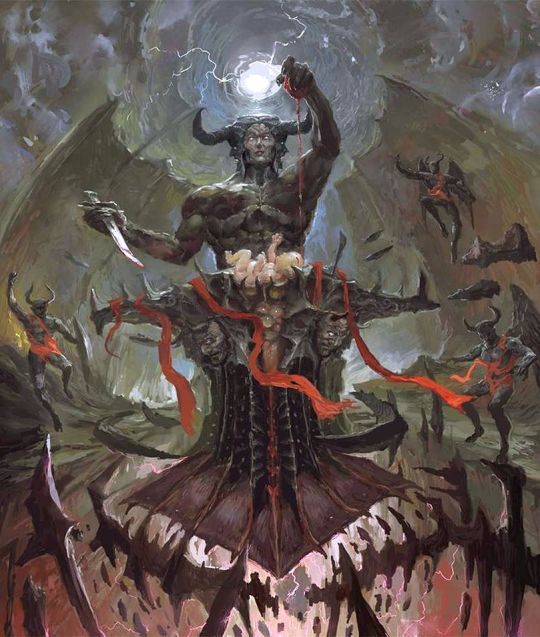

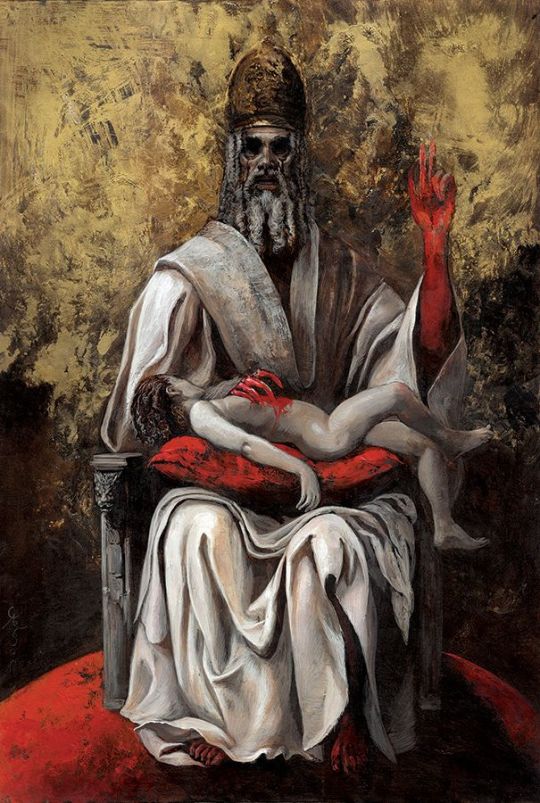

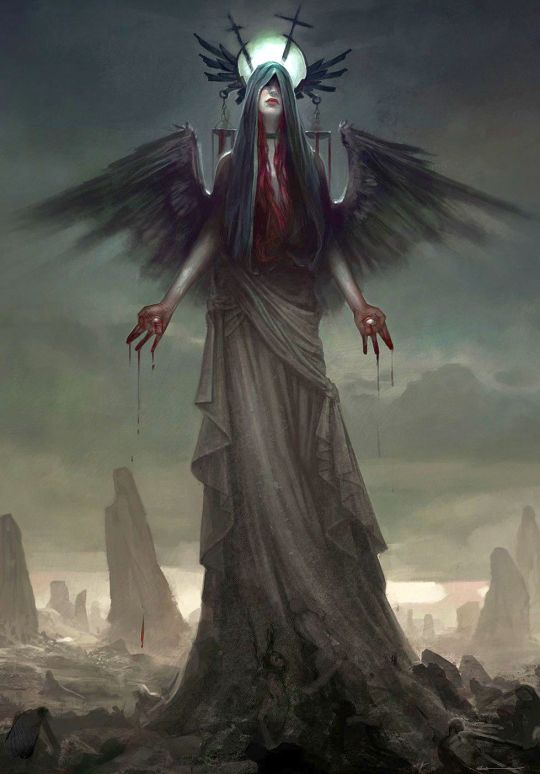

My instruction will drip as the rain, my sayings will trickle as the dew: To a proverbial utterance I shall incline my ear; On a harp I shall open up my riddle…
“The proverbs of Sol’o·mon the son of David, the king of Israel, for one to know wisdom and discipline, to discern the sayings of understanding, to receive the discipline that gives insight, righteousness and judgment and uprightness, to give to the inexperienced ones shrewdness, to a young man knowledge and thinking ability.
A wise person will listen and take in more instruction, and a man of understanding is the one who acquires skillful direction, to understand a proverb and a puzzling saying, the words of wise persons and their riddles.
The fear of Jehovah is the beginning of knowledge. Wisdom and discipline are what mere fools have despised. Listen, my son, to the discipline of your father, and do not forsake the law of your mother. For they are a wreath of attractiveness to your head and a fine necklace to your throat.
My son, if sinners try to seduce you, do not consent. If they keep saying: “Do go with us. Do let us lie in ambush for blood. Do let us lie in concealment for the innocent men without any cause. Let us swallow them down alive just like She’ol, even whole, like those going down into a pit. Let us find all sorts of precious valuables. Let us fill our houses with spoil. Your lot you ought to cast in among us. Let there come to be just one bag belonging to all of us” — my son, do not go in the way with them. Hold back your foot from their roadway. For their feet are those that run to sheer badness, and they keep hastening to shed blood. For it is for nothing that the net is spread before the eyes of anything owning wings. Consequently they themselves lie in ambush for the very blood of these; they lie in concealment for their souls. Thus are the paths of everyone making unjust profit. It takes away the very soul of its owners.
True wisdom itself keeps crying aloud in the very street. In the public squares it keeps giving forth its voice. At the upper end of the noisy streets it calls out. At the entrances of the gates into the city it says its own sayings:
“How long will YOU inexperienced ones keep loving inexperience, and [how long] must YOU ridiculers desire for yourselves outright ridicule, and [how long] will YOU stupid ones keep hating knowledge? Turn back at my reproof. Then to YOU I will cause my spirit to bubble forth; I will make my words known to YOU. Because I have called out but YOU keep refusing, I have stretched out my hand but there is no one paying attention, and YOU keep neglecting all my counsel, and my reproof YOU have not accepted, I also, for my part, shall laugh at YOUR own disaster, I shall mock when what YOU dread comes, when what YOU dread comes just like a storm, and YOUR own disaster gets here just like a storm wind, when distress and hard times come upon YOU. At that time they will keep calling me, but I shall not answer; they will keep looking for me, but they will not find me, for the reason that they hated knowledge, and the fear of Jehovah they did not choose. They did not consent to my counsel; they disrespected all my reproof. So they will eat from the fruitage of their way, and they will be glutted with their own counsels. For the renegading of the inexperienced ones is what will kill them, and the easygoingness of the stupid is what will destroy them. As for the one listening to me, he will reside in security and be undisturbed from dread of calamity.”
My son, if you will receive my sayings and treasure up my own commandments with yourself, so as to pay attention to wisdom with your ear, that you may incline your heart to discernment; if, moreover, you call out for understanding itself and you give forth your voice for discernment itself, if you keep seeking for it as for silver, and as for hid treasures you keep searching for it, in that case you will understand the fear of Jehovah, and you will find the very knowledge of God. For Jehovah himself gives wisdom; out of his mouth there are knowledge and discernment. And for the upright ones he will treasure up practical wisdom; for those walking in integrity he is a shield, by observing the paths of judgment, and he will guard the very way of his loyal ones. In that case you will understand righteousness and judgment and uprightness, the entire course of what is good.
When wisdom enters into your heart and knowledge itself becomes pleasant to your very soul, thinking ability itself will keep guard over you, discernment itself will safeguard you, to deliver you from the bad way, from the man speaking perverse things, from those leaving the paths of uprightness to walk in the ways of darkness, from those who are rejoicing in doing bad, who are joyful in the perverse things of badness; those whose paths are crooked and who are devious in their general course; to deliver you from the strange woman, from the foreign woman who has made her own sayings smooth, who is leaving the confidential friend of her youth and who has forgotten the very covenant of her God. For down to death her house does sink and down to those impotent in death her tracks. None of those having relations with her will come back, nor will they regain the paths of those living.
The purpose is that you may walk in the way of good people and that the paths of the righteous ones you may keep. For the upright are the ones that will reside in the earth, and the blameless are the ones that will be left over in it. As regards the wicked, they will be cut off from the very earth; and as for the treacherous, they will be torn away from it.
My son, my law do not forget, and my commandments may your heart observe, because length of days and years of life and peace will be added to you. May loving-kindness and trueness themselves not leave you. Tie them about your throat. Write them upon the tablet of your heart, and so find favor and good insight in the eyes of God and of earthling man. Trust in Jehovah with all your heart and do not lean upon your own understanding. In all your ways take notice of him, and he himself will make your paths straight.
Do not become wise in your own eyes. Fear Jehovah and turn away from bad. May it become a healing to your navel and a refreshment to your bones.
Honor Jehovah with your valuable things and with the firstfruits of all your produce. Then your stores of supply will be filled with plenty; and with new wine your own press vats will overflow.
The discipline of Jehovah, O my son, do not reject; and do not abhor his reproof, because the one whom Jehovah loves he reproves, even as a father does a son in whom he finds pleasure.
Happy is the man that has found wisdom, and the man that gets discernment, for having it as gain is better than having silver as gain and having it as produce than gold itself. It is more precious than corals, and all other delights of yours cannot be made equal to it. Length of days is in its right hand; in its left hand there are riches and glory. Its ways are ways of pleasantness, and all its roadways are peace. It is a tree of life to those taking hold of it, and those keeping fast hold of it are to be called happy.
Jehovah himself in wisdom founded the earth. He solidly fixed the heavens in discernment. By his knowledge the watery deeps themselves were split apart, and the cloudy skies keep dripping down light rain. My son, may they not get away from your eyes. Safeguard practical wisdom and thinking ability, and they will prove to be life to your soul and charm to your throat. In that case you will walk in security on your way, and even your foot will not strike against anything. Whenever you lie down you will feel no dread; and you will certainly lie down, and your sleep must be pleasurable. You will not need to be afraid of any sudden dreadful thing, nor of the storm upon the wicked ones, because it is coming. For Jehovah himself will prove to be, in effect, your confidence, and he will certainly keep your foot against capture.
Do not hold back good from those to whom it is owing, when it happens to be in the power of your hand to do [it]. Do not say to your fellowman: “Go, and come back and tomorrow I shall give,” when there is something with you. Do not fabricate against your fellowman anything bad, when he is dwelling in a sense of security with you. Do not quarrel with a man without cause, if he has rendered no bad to you.
Do not become envious of the man of violence, nor choose any of his ways. For the devious person is a detestable thing to Jehovah, but His intimacy is with the upright ones. The curse of Jehovah is on the house of the wicked one, but the abiding place of the righteous ones he blesses. If it has to do with ridiculers, he himself will deride; but to the meek ones he will show favor. Honor is what the wise ones will come to possess, but the stupid ones are exalting dishonor.
Listen, O sons, to the discipline of a father and pay attention, so as to know understanding. For good instruction is what I certainly shall give to YOU. My law DO not leave. For I proved to be a real son to my father, tender and the only one before my mother. And he would instruct me and say to me: “May your heart keep fast hold of my words. Keep my commandments and continue living. Acquire wisdom, acquire understanding. Do not forget, and do not turn aside from the sayings of my mouth. Do not leave it, and it will keep you. Love it, and it will safeguard you. Wisdom is the prime thing. Acquire wisdom; and with all that you acquire, acquire understanding. Highly esteem it, and it will exalt you. It will glorify you because you embrace it. To your head it will give a wreath of charm; a crown of beauty it will bestow upon you.”
Hear, my son, and accept my sayings. Then for you the years of life will become many. I will instruct you even in the way of wisdom; I will cause you to tread in the tracks of uprightness. When you walk, your pace will not be cramped; and if you run, you will not stumble. Take hold on discipline; do not let go. Safeguard it, for it itself is your life.
Into the path of the wicked ones do not enter, and do not walk straight on into the way of the bad ones. Shun it, do not pass along by it; turn aside from it, and pass along. For they do not sleep unless they do badness, and their sleep has been snatched away unless they cause someone to stumble. For they have fed themselves with the bread of wickedness, and the wine of acts of violence is what they drink. But the path of the righteous ones is like the bright light that is getting lighter and lighter until the day is firmly established. The way of the wicked ones is like the gloom; they have not known at what they keep stumbling.
My son, to my words do pay attention. To my sayings incline your ear. May they not get away from your eyes. Keep them in the midst of your heart. For they are life to those finding them and health to all their flesh. More than all else that is to be guarded, safeguard your heart, for out of it are the sources of life. Remove from yourself the crookedness of speech; and the deviousness of lips put far away from yourself. As for your eyes, straight ahead they should look, yes, your own beaming eyes should gaze straight in front of you. Smooth out the course of your foot, and may all your own ways be firmly established. Do not incline to the right hand or to the left. Remove your foot from what is bad.
My son, to my wisdom O do pay attention. To my discernment incline your ears, so as to guard thinking abilities; and may your own lips safeguard knowledge itself.
For as a honeycomb the lips of a strange woman keep dripping, and her palate is smoother than oil. But the aftereffect from her is as bitter as wormwood; it is as sharp as a two-edged sword. Her feet are descending to death. Her very steps take hold on She’ol itself. The path of life she does not contemplate. Her tracks have wandered she does not know [where]. So now, O sons, listen to me and do not turn away from the sayings of my mouth. Keep your way far off from alongside her, and do not get near to the entrance of her house, that you may not give to others your dignity, nor your years to what is cruel; that strangers may not satisfy themselves with your power, nor the things you got by pain be in the house of a foreigner, nor you have to groan in your future when your flesh and your organism come to an end. And you will have to say: “How I have hated discipline and my heart has disrespected even reproof! And I have not listened to the voice of my instructors, and to my teachers I have not inclined my ear. Easily I have come to be in every sort of badness in the midst of the congregation and of the assembly.”
Drink water out of your own cistern, and tricklings out of the midst of your own well. Should your springs be scattered out of doors, [your] streams of water in the public squares themselves? Let them prove to be for you alone, and not for strangers with you. Let your water source prove to be blessed, and rejoice with the wife of your youth, a lovable hind and a charming mountain goat. Let her own breasts intoxicate you at all times. With her love may you be in an ecstasy constantly. So why should you, my son, be in an ecstasy with a strange woman or embrace the bosom of a foreign woman? For the ways of man are in front of the eyes of Jehovah, and he is contemplating all his tracks. His own errors will catch the wicked one, and in the ropes of his own sin he will be taken hold of. He will be the one to die because there is no discipline, and [because] in the abundance of his foolishness he goes astray.
A good-for-nothing man, a man of hurtfulness, is walking with crookedness of speech, winking with his eye, making signs with his foot, making indications with his fingers. Perverseness is in his heart. He is fabricating something bad all the time. He keeps sending out merely contentions. That is why suddenly there will come his disaster; in an instant he will be broken, and there will be no healing.
There are six things that Jehovah does hate; yes, seven are things detestable to his soul: lofty eyes, a false tongue, and hands that are shedding innocent blood, a heart fabricating hurtful schemes, feet that are in a hurry to run to badness, a false witness that launches forth lies, and anyone sending forth contentions among brothers. Observe, O my son, the commandment of your father, and do not forsake the law of your mother. Tie them upon your heart constantly; bind them upon your throat. When you walk about, it will lead you; when you lie down, it will stand guard over you; and when you have waked up, it itself will make you its concern. For the commandment is a lamp, and a light the law is, and the reproofs of discipline are the way of life.”
Proverbs 1-6:12-23, NWT
They Keep Hastening to Shed Blood; The Wine of Acts of Violence is What They Drink
#Jehovah#God#Bible#Scripture#Proverbs#Prophecy#Israel#Instruction#Wisdom#Knowledge#Father#Mother#Esoteric#Esoterica#Art#Fantasy Art#Dark Art#Religious Art#Willem de Poorter#Giuseppe Cades#Guang Yung#Gerard Van Honthorst#Santiago Caruso#Arent De Gelder
1 note
·
View note
Text
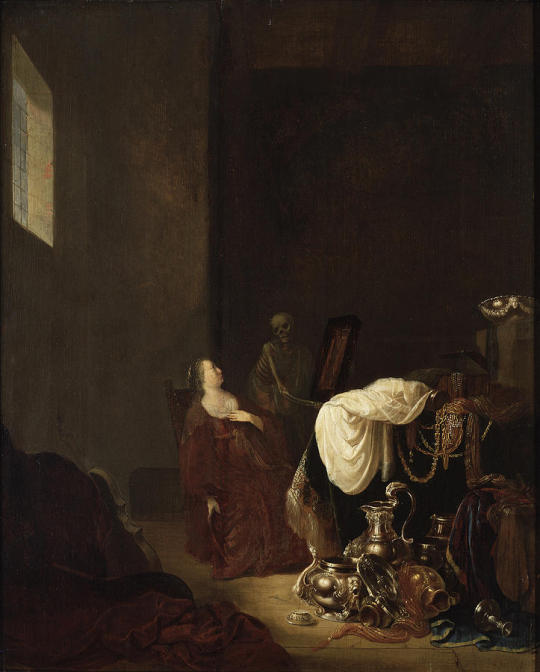
Vanitas Allegory ~ Willem de Poorter (1608-1668)
9 notes
·
View notes
Text
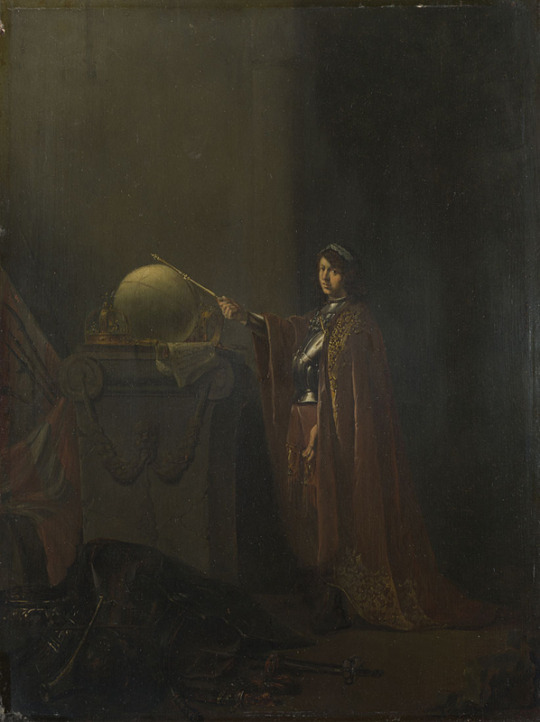
Título completo: Un sujeto alegórico (El gobernante justo)
Artista: Willem de Poorter
Fechas de artistas: 1608 - después de 1648
fecha hecha: probablemente 1636
Medio y soporte: Óleo sobre roble
Dimensiones: 50,2 × 37,5 cm
Resumen de inscripción: Firmado
Crédito de adquisición: Presentado por T. Humphrey Ward, 1889
Numero de inventario: NG1294
Esto no es un retrato, es una alegoría, un intento de representar una idea o un ideal. Sin embargo, interpretar el simbolismo es difícil. Vemos a un joven, erguido y ligeramente distante que gira la cabeza para mirarnos directamente a los ojos.
La figura puede estar basada en un libro de iconología de Cesare Ripa que se publicó por esta época. Incluye una ilustración de una mujer suntuosamente vestida con una corona, un peto y un cetro, y está titulado Mérito. Si esta era la intención de De Poorter aquí, entonces podríamos entender la imagen como una encarnación del Mérito asumiendo el poder mundano y representando así al Gobernante Justo. Está literalmente iluminado por la luz del sol que entra por la alta ventana, y el cetro indica su autoridad; las coronas, su estatus regio; la coraza (peto) su fuerza. Sin embargo, parece rechazar los instrumentos y la grandilocuencia de la guerra, en favor de las leyes escritas en el pergamino.
Información e imagen de la web de la National Gallery de Londres.
0 notes
Text
A Parable about Faithfulness (Luke 19:11-27)
The great humanitarian issues of this world are not only individual concerns but are also systemic problems.
Parable of the Ten Minas, by Dutch painter Willem de Poorter (1608-1668)
The crowd was listening to everything Jesus said. And because he was nearing Jerusalem, he told them a story to correct the impression that the Kingdom of God would begin right away.
He said, “A nobleman was called away to a distant empire to be crowned king and then return. Before he left, he called together ten of his…
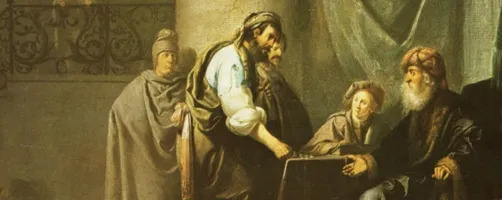
View On WordPress
#christ&039;s parables#christian commitment#christian discipleship#christian ethics#christian faith#christian life#christian service#christian spirituality#christianity#faith#faithful#faithfulness#god&039;s kingdom#god&039;s reign#gospel of luke#injustice#jesus christ#justice#leadership#luke 19#parable#systemic evil#systemic sin
0 notes
Text
Arms at the Ready
Alcaeus 140 Voigt (=Athenaeus Deipnosophistae 14.627a-b)
The great house flashes with bronze:
All the roof is adorned for Ares
With gleaming helmets, down from which
Nod crests of white horsehair –
Adornments for the heads of men.
And gleaming greaves of bronze – a bulwark
Against the mighty missile – conceal
The pegs they hang upon; cuirasses
Of fresh linen, and hollow shields
Cast down on the floor…besides
Blades of Chalcis are ready to hand,
Ready to hand are numerous belts
And tunics too. One can’t forget
These things, since first we undertook this work.
μαρμαίρει δὲ μέγας δόμος
χαλκῷ: παῖσα δ᾽ Ἄρῃ κεκόσμηται στέγα
λἀμπραισιν κυνίαισι, κὰτ
τᾶν λεῦκοι κατέπερθεν ἵππιοι λόφοι
νεύοισιν, κεφἀλαισιν ἀν-
δρῶν ἀγάλματα: χάλκιαι δὲ πασσάλοις
κρύπτοισιν περικείμεναι
λάμπραι κνάμιδες, ἔρκος ἰσχύρω βέλεος,
θόρρακές τε νέω λίνω,
κόιλαι τε κἁτ ἄσπιδες βεβλήμεναι,
πὰρ δὲ Χαλκίδικαι σπάθαι,
πὰρ δὲ ζώματα πόλλα καὶ κυπάσσιδες.
τῶν οὐκ ἔστι λἀθεσθ᾽, ἐπεὶ
δὴ πρώτισθ᾽ ὑπὰ ἔργον ἕσταμεν τόδε.

Still Life with Weapons and Banners, Willem de Poorter, 1636
#classics#tagamemnon#Ancient Greece#Archaic Greece#Greek#Ancient Greek#poem#poetry#translation#poetry in translation#Greek poetry#Ancient Greek poetry#Alcaeus#Alkaios#lyric poem#lyric poetry#Willem de Poorter
68 notes
·
View notes
Photo

Willem de Poorter (b.1608 - d.after 1648), 'A Gentleman in Armour, with a Skull' (formerly called An Allegory of War), oil on panel, no date (1600s), Dutch, for sale for est. $15,000 - $20,000 USD in Christie's Old Master Paintings sale, October 2020.
32 notes
·
View notes
Photo

#willem de poorter#vanitas on scribe4haxan#vanitas#vanitas still life#vanitas stilleven#allegory of death
279 notes
·
View notes
Photo
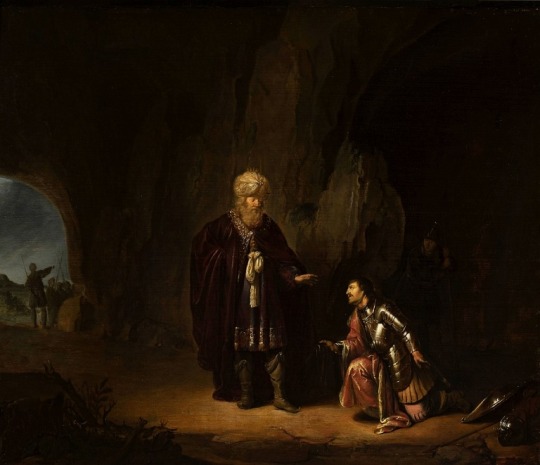
Saul and David in the cave of En-Gedi
Willem de Poorter
42 notes
·
View notes
Photo
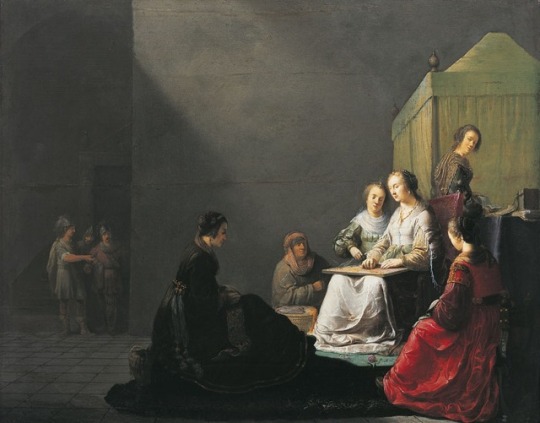
Lucretia (d.1508) was a Roman noble woman, whose life is told between myth and mystery. Was she the catalyst and martyr of the Roman rebellion or was she a character to fit a vengeful, tragic narrative? Throughout art history, her trauma is exploited and sexualized with nude images of her at the brink of death. Here I prefer to remember a skillful, mundane Lucretia weaving with her ladies in her final moments of sunlight, while men and death lurk.
Painted by Willem de Poorter, in 1633.
1 note
·
View note
Photo

The Idolatry of King Solomon, Willem de Poorter (Dutch, 1608–1668), 1630–1648
Oil on panel
#art history#history of art#Willem de Poorter#dutch art#dutch artist#dutch painter#dutch golden age#dutch baroque#baroque#baroque art#17th century#17th century art#1600s#1600s art#rijksmuseum#uploads#oil on canvas#oil painting#painting#paintings
35 notes
·
View notes
Photo

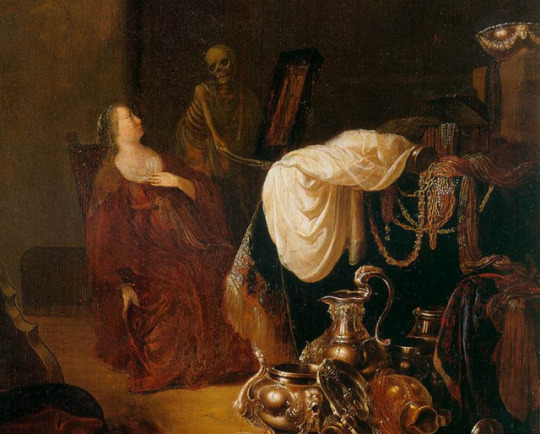
Willem de Poorter - Allegory of Vanity (c.1630s), and detail with mirror and skeleton
5 notes
·
View notes
Text
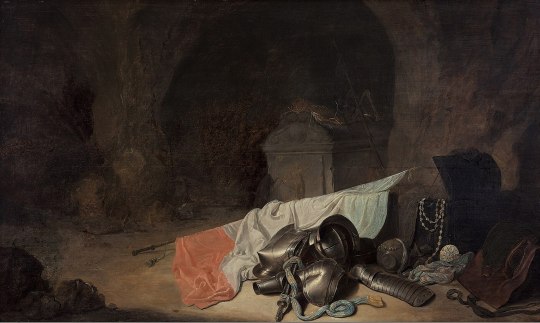
Vanitas still life
Willem de Poorter (1608-1668)
1 note
·
View note
Photo

St. Paul and St. Barnabas at Lystra, Willem de Poorter, 1636, Minneapolis Institute of Art: Paintings
man in white with long grey beard at left center accompanied by man in mint green; both figures wear laurel wreaths; man in white stands behind an altar with burning twigs; three kneeling women at right center with chicken and gold pitcher; silver objects and branches below altar; several other kneeling figures at left; standing figures including two musicians and cow behind; ruined sculpture in LRC; sculpture on tall pedestal behind main figures; buildings close behind background figures
Size: 21 1/2 x 31 1/2 in. (54.61 x 80.01 cm) (sight) 30 1/4 x 40 1/2 in. (76.84 x 102.87 cm) (outer frame)
Medium: Oil on panel
https://collections.artsmia.org/art/111619/
2 notes
·
View notes
Photo

The Stoning of Saint Stephen, Willem de Poorter, 17th century, Harvard Art Museums: Drawings
The Maida and George Abrams Collection, Fogg Art Museum, Harvard University, Cambridge, Massachusetts
Size: 41 x 62.4 cm (16 1/8 x 24 9/16 in.)
Medium: Black chalk, brown ink, brown wash, and white opaque watercolor on two vertically joined sheets of off-white antique laid paper
https://www.harvardartmuseums.org/collections/object/191933
1 note
·
View note
Photo
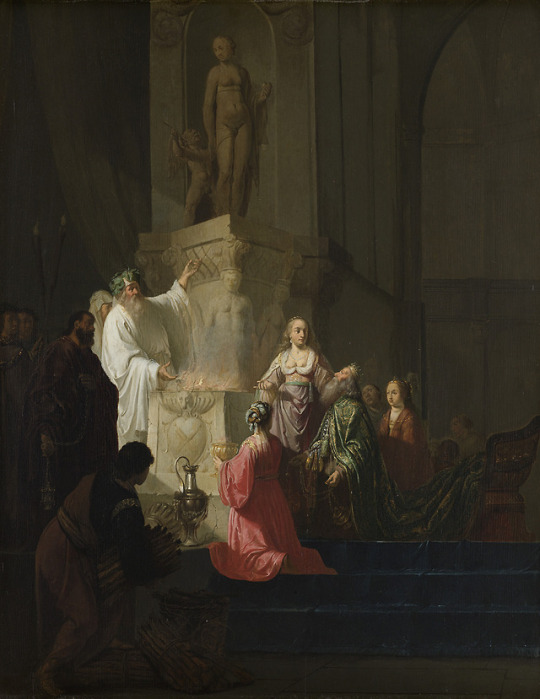
The idolatry of King Solomon by Willem de Poorter, Museum of the Netherlands
De afgoderij van koning Salomo. Tempelinterieur waarin koning Salomo, omringd door enkele vrouwen, knielt voor een altaar waar wierook gebrand wordt. Links staat een priester in wit gewaad, wijzend naar een beeldengroep van Venus en Cupido. Op de voorgrond bengt een man bundels brandhout.
https://www.rijksmuseum.nl/nl/collectie/SK-A-757
25 notes
·
View notes
Text
De 10 Foto's Met Een Lang Verhaal Staan in een blog, op Tumblr. 98
De Goede Herderkerk aan het Kastanjeplein te Schiebroek, juli 1957.
Schiebroek was oorspronkelijk een ambachtsheerlijkheid die reeds in het begin van de 14de eeuw bestond. Ze kwam in die tijd voor onder de naam Broek (moerasland). Later sprak men over Schiebroek vanwege haar ligging in Schieland. De heerlijkheid bestond uit een tussen 1772 en 1779 drooggemaakte polder en een woonbuurtje bij de Kleiweg. In 1941 werd Schiebroek door Rotterdam geannexeerd. Met uitzondering van de Schiebroekselaan en -straat liggen de bovengenoemde straten enz. in en bij de voormalige buurt. Het Schiebroeksepark is het recreatiegebied, dat ten noordoosten van de 'tuinstad' ligt. De Schiebroekse Ringvaart is het water dat ten tijde van de inpoldering van het moerasgebied in de 18de eeuw is gegraven. Van deze vaart bestaat alleen het gedeelte langs Ringdijk en Erasmussingel nog. Voor 1983 heette deze alleen Ringvaart.
De Goede Herderkerk is een mooi gesitueerde, architectonisch interessante wederopbouwkerk met toren in de wijk Schiebroek, in Rotterdam Noord. Gebouwd als Ned. Hervormde Kerk. Na sluiting van enkele andere kerkgebouwen in Schiebroek is de Goede Herderkerk de centrale kerk van de Protestantse Gemeente Schiebroek.
De fotograaf is Ary Groeneveld en de foto komt uit het Stadsarchief Rotterdam. De informatie komt eveneens uit het Stadsarchief Rotterdam en van reliwiki.nl
Bron, Rotterdam van Toen, Stads Archief Rotterdam

Een zijstraat van de Dirk Smeetslaan in de wijk Smeetsland, 1973. Weet iemand welke straat we zien?
Dirk Smeets, aan wie de oorspronkelijke inpoldering van de polder Dirk Smeetsland wordt toegeschreven.
Smeetsland is een buurt in de wijk Lombardijen, gebouwd als 'nooddorp' tijdens de Tweede Wereldoorlog. De buurt dankt zijn naam aan Meester Dirk Smeets, drooglegger van de naar hem genoemde polder. De Smeetslandsedijk loopt ten noorden van de voormalige polder Dirk Smeetsland, die reeds in de tweede helft van de 15de eeuw onder deze naam bekend was. In 1562 wordt hij genoemd toen er een overeenkomst werd gesloten tussen de ingelanden van bovengenoemde polder en die van Mr. Arentsland over een gemeenschappelijk dijk. Vroeger liep deze door naar de Kerkedijk. Van de oorspronkelijke Smeetslandsedijk is nog maar een klein gedeelte over. Het nog bestaande gedeelte stond bekend als Smeetslandse Hogedijk, het verdwenen lagere gedeelte als Smeetslandse Lagedijk.
Smeetsland was opgezet als nooddorp in de Tweede Wereldoorlog. In januari 2006 gaf Com.wonen (de verhuurder) aan de woningen uiterlijk 2010 gesloopt te willen hebben omdat de woningen niet meer aan de eisen van de tijd voldeden. Een aantal bewoners, verenigd in de actiegroep Smeetsland was het hiermee niet eens en dacht dat Com.wonen bewust op sloop aanstuurde door leegkomende woningen bewust onbewoonbaar te maken. Com.wonen zou de woningen willen vervangen door dure woningen.
De fotograaf is Ary Groeneveld en de foto komt uit het Stadsarchief Rotterdam. De informatie komt eveneens uit het Stadsarchief Rotterdam en van Wikipedia.
Bron, Rotterdam van Toen, Stads Archief Rotterdam

Interieur van Le Bateau, een disco van het Hilton Hotel, met dansende jongeren en diskjockey William Dee die vanuit een sloep muziek laat horen, februari 1969 (geschat).
Discotheek in de kelder van Hilton
IN DE KELDERS van Hilton is men deze week begonnen met de bouw van Rotterdams jongste vermaaksgelegenheid: de discotheek Le Bateau die begin mei zal worden geopend.
Hilton zocht al langer naar een goede bestemming van de fietsenkelder, sinds zijn personeel de dagelijkse tocht van huis naar werk per auto pleegt te maken. In de Amsterdamse vestiging werd het een „fietsotheek"; in de Rotterdamse wordt het Le Bateau. Men zal er tegen niet al te hoge prijzen een drankje kunnen gebruiken en kunnen luisteren naar een diskjockey en zijn grammofoonplaten. De ingang van Hiltons discotheek komt aan de zijde van de Kruiskade. Het ontwerp van de ' Rotterdamse, . zich „stylist" noemende, H. J. Slingerland voorziet in een sfeervol scheepsruim zonder nu precies alles aan een dergelijk interieur te laten herinneren. „Het moet niet al te nadrukkelijk worden." zegt de ontwerper er zelf van. De discotheek Le Bateau krijgt ongeveer 125 zitplaatsen. Zij zal door de. week tot 's nachts twee en in de weekeinden tot vier uur geopend zijn.
De fotograaf is Ary Groeneveld en de foto komt uit het Stadsarchief Rotterdam. De informatie komt via delpher.nl uit het Vrije Volk van 14 maart 1968.
Bron, Rotterdam van Toen, Stads Archief Rotterdam

Grote belangstelling van de Schiebroekse wijkbewoners op het Kastanjeplein voor de nieuwe tramlijn 5, 24 januari 1969.
Schiebroek, óók mistig, maar vrolijk vlaggend, heeft vanochtend van de officiële opening van de verlengde en vernieuwde tramlijn 5 een feest gemaakt, waarvan RET-directeur drs. C.G. van Leeuwen in alle oprechtheid kon zeggen, dat hij „zoiets nog nooit had meegemaakt."
Hij had gelijk! Op het Kastanjeplein had zich om tien voor twaalf een zo grote en enthousiaste menigte, verzameld, dat de enkele honderden genodigden in de drie, met bloemen versierde feesttrams er compleet van stonden te kijken.
„We zijn tevreden,'" liet voorzitter U. Tukker van de wijkraad voor Hillegersberg-Schiebroek vanachter de microfoon weten. Dit is de lijn waarop we hebben gewacht. Het zal voor de automobilist een probleem worden wat hij straks moet doen: met zijn eigen wagen of met het openbaar vervoer naar de stad."
De leerlingen van de vijfde klassen van de Schiebroekse scholen, aangevoerd door mevrouw Takkenbos (een dominerende sopraan), zongen een feestlied. Ook daarin kwam de vreugde over de gelijktijdige verdwijning van de verguisde buslijn 45 tot uiting;
En dan klonk het boos en zuur,
Mens, ik sta hier al een uur.
Je kan nooit die bus vertrouwen.
Dat allemaal op de wijs van „Naar de speeltuin".
De officiële opening was begonnen in de Burgerzaal van het stadhuis, waar wethouder H. W. Jettinghoff van Openbare Nutsbedrijven en drs. Van Leeuwen het woord voerden.
Schiebroek in feeststemming; tram 5 is gearriveerd! Morgen begint hij de normale dienst.
De fotograaf is Ary Groeneveld en de foto komt uit het Stadsarchief Rotterdam. De informatie komt via delpher.nl uit het Vrije Volk van 24 januari 1969.
Bron, Rotterdam van Toen, Stads Archief Rotterdam

Gezicht op de Koningshaven en de Nieuwe Maas met het Antwerpse Hoofd, 1938.
De Nieuwe Maas is de rivier waaraan de steden Rotterdam, Schiedam en Vlaardingen zijn gelegen. De rivier ontstaat ter hoogte van Slikkerveer uit de samenvloeiing van de Lek en de Noord en eindigt 24 kilometer westelijker bij Vlaardingen, vanwaar zij samengaat met de Oude Maas en via het Scheur en ten slotte vanaf de Maeslantkering via de Nieuwe Waterweg verder naar de Noordzee stroomt. De voornaamste zijrivier is de Hollandse IJssel die zich 4 kilometer van het begin, ter hoogte van Kralingseveer, bij de Nieuwe Maas voegt. Westelijker zijn er de Rotte en de Schie.
Bij gelegenheid van het bezoek van koning Willem III op 21 mei 1874 aan Rotterdam ontving de Noorderhaven de naam Koningshaven. De Noorderhaven werd in 1871 gegraven als onderdeel van de havenontwikkeling op Feijenoord. De meest noordelijke strook van Feijenoord kwam daardoor middenin het water te liggen en werd Noordereiland genoemd. De Noorderhaven was een ontwerp van de Rotterdamsche Handelsvereeniging.
Rederij H. Braakman & Co onderhield vanaf deze kade met de zogeheten telegraafboten een dagelijkse dienst voor passagiers en goederen op Antwerpen. Het Antwerpse Hoofd stond in de volksmond ook wel bekend als de Punt van Braakman.
De fotograaf is Adrianus Langejan en de foto komt uit het Stadsarchief Rotterdam. De informatie komt eveneens uit het Stadsarchief Rotterdam en van Wikipedia.
Bron, Rotterdam van Toen, Stads Archief Rotterdam

De Blaak met links modemagazijn Gerzon aan de Korte Hoogstraat tijdens uitverkoop wegens verhuizing naar de Lijnbaan, 5 augustus 1970. Op de achtergrond het kantoorgebouw de Hoofdpoort (Van Marle concern/Stad Rotterdam Verzekeringen).
Uit het Vrije Volk van 8 augustus 1970:
Vakbonden bezorgd over voortbestaan van Gerzon
(Van onze sociaal-economische redactie)
AMSTERDAM — De vakbonden In de detailhandel maken zich ernstig zorgen over het voortbestaan van Gerzons Modemagazijnen. Een woordvoerder van de NW-bond Mercurius zei ons bang te zijn dat het concern In handen is gevallen van een onderneming die Gerzon alleen maar als onroerend goed-projekt zal beschouwen.
De vakbonden zijn er zeer kort geleden achter gekomen dat achter het overnemende bedrijf, Schröder N.V, de Centrumbank staat, een onderneming waarin de heer C. de Ruiter een belangrijke rol zou spelen.
Directeur De Poorter, die met de Centrumbank onderhandelt over de overname van zijn 60 filialen tellende onderneming „Het Lingeriehuis" typeert De Ruiter in Het Parool als „een duidelijk soort onroerend-goed-man, een soort Caransa". Toen De Ruiter, nog geen jaar geleden, Schröder opkocht werden twee van de drie filialen, namelijk die in Rotterdam 'en Amsterdam, doorverkocht. Schröder heeft aan de bonden beloofd dat bij de komende reorganisatie de identiteit van Gerzon zal worden gehandhaafd „één en ander voor zover zulks redelijkerwijs van de koper kan worden verlangd". Een bestuurder van Mercurius zei ons dat De Ruiter met deze mededeling alle kanten uit kan. De bonden beramen zich, nu op maatregelen die „een stokje voor de plannen van Schröder kunnen steken en de belangen van het 1400 man sterke personeel veilig kunnen stellen."
De foto komt uit de collectie topografie van het Stadsarchief Rotterdam. De informatie komt via delpher.nl uit het Vrije Volk van 8 augustus 1970.
Bron, Rotterdam van Toen, Stads Archief Rotterdam

Gezicht op de Coolhaven met de Lage Erfbrug, gezien vanuit een flat aan de Rochussenstraat, 1926-1935. Op de achtergrond rechts de Schiedamseweg, links de Voorstraat en de Havenstraat.
De Coolhaven is een haven in Rotterdam. De Coolhaven werd in 1922 gegraven als nieuwe verbinding tussen de Delfshavense Schie en de Nieuwe Maas. Het is behalve een waterweg tevens een boezem van het Hoogheemraadschap Delfland.
De verbinding tussen de Coolhaven en de Nieuwe Maas loopt via de in 1933 geopende Parksluizen en de Parkhaven. Door de Coolhaven varen veel zand- en grindschepen uit en naar Delft en Den Haag. Vanaf de Parkhaven kunnen boten doorvaren naar de Nieuwe Maas.
De brug dankt haar naam aan het vroegere Lage Erf, het laatste gedeelte van de Nieuwe Binnenweg bij de Delfshavense Schie. De naam Lage Erf is al oud en herinnert aan een enigszins in een put liggend erf, dat vroeger gebruikt werd voor opslag- en losplaats van materiaal. Ook heeft het als kermisterrein dienst gedaan. De Lage Erfbrug werd op 27 maart 1926 voor het verkeer geopend.
De foto komt uit de fotocollectie van het Stadsarchief Rotterdam. De informatie komt eveneens uit het Stadsarchief Rotterdam en van Wikipedia.
Bron, Rotterdam van Toen, Stads Archief Rotterdam
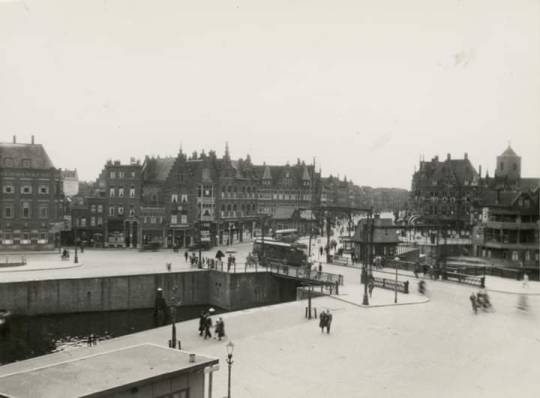
Gezicht op de Gedempte Glashaven en de Jodensteeg. Op de achtergrond zien we de Zuiderkerk. De foto is gemaakt in 1930.
De Gedempte Glashaven kent de volgende geschiedenis: De Staten Generaal verleenden op 5 februari 1614 aan Claes Jansz. Wijtmans en Compagnie octrooi om allerhande soorten huis- en vensterglas te mogen maken. Enige weken later besloot de Rotterdamse vroedschap om aan de Compagnie een zestal erven aan de meest westelijke Dwarshaven, tussen Wijn- en Scheepmakershaven, af te staan voor de stichting van een glasblazerij of glashuis. De Compagnie verbond zich om gedurende twintig jaar nergens anders dit bedrijf uit te oefenen. De overige erven aan de Dwarshaven werden pas in mei 1614 verkocht. Aan de glasblazerij ontleende de haven sindsdien haar naam. In de eerste tijd komt ze ook voor als Gelderse Juffrouwenhaven of haventje van het glashuis. In 1882 werd ze gedempt. Sindsdien sprak men van Gedempte Glashaven. Bij bovengenoemd besluit verviel het toevoegsel en werd de straat weer gewoon Glashaven genoemd.
De Jodensteeg liep van de Jufferstraat naar de Glashaven ten noorden van de Zuiderkerk. Ze was oorspronkelijk genaamd Glasdwarsstraat of Dwarsglasstraat. Sinds 1674 komt ze voor als Jodensteeg. Dat de Hoogduitse Joden toen hun godsdienstoefeningen hielden in een huis, gelegen aan de westzijde van de Glashaven, met een vrije uitgang uitkomende in de Glasdwarsstraat, zal de naam wel moeten verklaren. In 1678 werd de Joodse Gemeente eigenares van het huis met een pakhuis daaronder en een loods en erven daarachter. Bij de uitgifte van de erven voor het Glashuis in 1614 werd de straat reeds vermeld. In 1725 is deze synagoge vervangen door het gebouw dat tot aan het bombardement in mei 1940 aan de Boompjes stond. Bij besluit B. 3 april 1944 werd de straatnaam ingetrokken.
De fotograaf is de heer Berssenbrugge en de foto bevindt zich in het Stadsarchief. De informatie komt eveneens van het Stadsarchief.
Bron, Rotterdam van Toen, Stads Archief Rotterdam

De Boezemweg vanuit het zuiden, 1970. Op de voorgrond het Oostplein, op de achtergrond de Koninginnekerk.
Ontleent haar naam aan de Hoge Boezem. Op 14 januari 1769 werd door de Staten van Holland en West-Friesland octrooi verleend om, tot ontlasting van de gemeene boezem de Rotte, een tweede boezem te maken in de polder Rubroek. Het overtollige water kon door een sluis bij de Oostpoort ontlast worden in de Nieuwe Maas. De aanbesteding van de hoge en de lage boezem en de watermolens vond plaats op 25 april 1772. In 1854 werd nog een Reserveboezem gegraven. In 1897 werden de Hoge en Lage Boezem gedeeltelijk en de Reserveboezem geheel gedempt. De 2de Reserveboezemstraat heette van 1914 tot 1918 Kampioenstraat, een naam die herinnerde aan het door de voetbalvereniging 'Sparta' behaalde kampioenschap. Deze vereniging oefende op het nabijgelegen Exercitieveld. De Boezemweg vormde voor 1973 een onderdeel van de Boezemsingel. Hoewel de naam Hoge Boezem als straatnaam reeds jarenlang in gebruik is, werd hij pas bij bovengenoemd besluit officieel vastgesteld. Op een plattegrond van 1881 komt de Boezemstraat vóór onder de naam Abattoirstraat naar het slachthuis of abattoir, dat daar geprojecteerd was. Dit abattoir werd op 1 mei 1883 geopend.
Het Oostplein ligt nabij de plaats waar de vroegere Oostpoort stond. Er zijn verschillende poorten van deze naam geweest. De oudste poort moet kort na 1358 zijn gebouwd. De laatste Oostpoort werd in 1836 voor afbraak verkocht. Een klein gedeelte bleef nog tot 1912 staan. De naam Oostplein werd in 1871 gebruikt voor het gedempte gedeelte van de Oostvest, ook wel Oostvestplein geheten. In 1902 werd de naam gegeven aan het plein dat ontstaan is door demping van de uit 1576 daterende kolk aan de Oostpoort.
De foto is gemaakt door de afdeling fotografie van het Gemeentearchief Rotterdam en komt uit het Stadsarchief Rotterdam. De informatie komt eveneens uit het Stadsarchief Rotterdam.
Bron, Rotterdam van Toen, Stads Archief Rotterdam

De Boompjes met het Oost-Indisch huis (huisnummer 90) op 22 september 1911. Het Oost-Indische huis is in mei 1940 verloren gegaan.
De VOC was lange tijd een succesvolle multinational, een handelsorganisatie met vestigingen aan de Kaap de Goede Hoop en in Batavia (Jakarta), India, China, Japan en overal in de Indonesische Archipel.
De Rotterdamse kamer, geleid door zeven bewindhebbers (directeuren), fungeerde als handelaar in koloniale waren, scheepsbouwer en reder. De kamer van de Maasstad nam een zestiende deel van de activiteiten van de Compagnie voor zijn rekening, net als de andere drie kleinere kamers Delft, Hoorn en Enkhuizen. Amsterdam en Middelburg waren grotere en belangrijkere kamers, maar gedurende de achttiende eeuw werd de kamer Rotterdam, opererend vanuit het op de Boompjes staande Oost-Indisch Huis, binnen de VOC relatief steeds belangrijker.
Vele door de kamer Rotterdam uitgeruste Oost-Indiëvaarders hebben op de Maas gevaren: schepen met bekende namen als Feijenoord, Charlois, Huis ten Donk, Zoelen, Blijdorp, Krooswijk, Ridderkerk en Rotterdam. Gedurende de achttiende eeuw hebben de Rotterdamse bewindhebbers gemiddeld twee schepen per jaar naar Azië gezonden. Per decennium werden er in de eerste helft van de achttiende eeuw gemiddeld zeven nieuwe Rotterdamse VOC-schepen op de werf op de Oostzeedijk gebouwd. Op deze schepen zaten natuurlijk vele stadsgenoten. Het Nationaal Archief heeft in samenwerking met het Stadsarchief Rotterdam de soldijboeken van de bemanning over de periode 1700-1794 in een database opgenomen.
De foto is gemaakt door Wouter Cool en komt uit het Stadsarchief Rotterdam.
Bron, Rotterdam van Toen, Stads Archief Rotterdam

0 notes